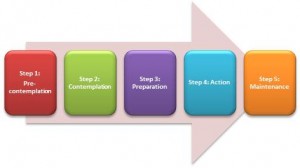The Art of Messaging – Who’s Really Listening?
 Imagine you are tasked with reaching new mothers in Kenya to inform them of healthy habits for their children and encourage them to stay up to date on their child’s vaccinations. You have done your research, and you know that mobile technologies are accessible and prevalent in the communities you are targeting. So now launching a mass SMS campaign with key messages seems like a simple yet cost-effective plan. But before creating this intervention, there are many steps and variables to consider.
Imagine you are tasked with reaching new mothers in Kenya to inform them of healthy habits for their children and encourage them to stay up to date on their child’s vaccinations. You have done your research, and you know that mobile technologies are accessible and prevalent in the communities you are targeting. So now launching a mass SMS campaign with key messages seems like a simple yet cost-effective plan. But before creating this intervention, there are many steps and variables to consider.
The first thing to remember is that human beings have become masters at tuning things out. Sights, sounds and information – we suffer from stimulus overload and have to pick and choose what we can actually pay attention to, let alone remember. Nowadays, with all of the mechanisms available that allow constant communication, particularly with the advent of mobiles, we subject ourselves to even more sights, sounds and information…and more things to tune out. In order for your health communication campaign in Kenya to be effective, you must ensure your messages are heard, remembered, and can potentially catalyze action.
To help guide people through this process, the mHealth Working Group hosted a half-day workshop on effective messaging for improved health outcomes. The workshop provided the opportunity for people to get hands-on experience creating messages for different initiatives in different regions of the world. After several presentations from experts in the field that described the nuances and outlined the process for creating effective messages, attendees broke into groups and participated in challenges to formulate creative health messaging that encouraged behavior change.
Lessons learned from this workshop can help us communicate effectively with those new mothers in Kenya. The first thing to consider is the process: what steps should we take before launching such a campaign? Formative research plays a key role and means putting yourself in the shoes of new mother. What is her relationship to her phone? How does she interact with it? Literacy may be an issue. You also need to consider whether she or her husband mostly interact with the phone. What is the level of technical competence within this population? After answering these questions, you may have a better understanding of the format you would like to use for the campaign. If literacy is an issue or if the population is not very technologically savvy, then a simple video or voice message series may be a better option than SMS.
After completing your research, it is time to consider the content of the messages. At the mHealth Working Group meeting, there were a lot of conversations around the usage of theories. Even though mHealth offers quick and modern channels for health communication, going back to foundational behavior change theory offers an evidence-based approach for effective message development. For example the transtheoretical model that outlines the steps toward behavior change (as illustrated below) can be used to help craft different messages for each of the various stages of behavior change.
Message tone and subject matter are also important. For a young mother in Kenya, consider a bottom-up approach–meaning a familiar tone will likely work better than an authoritative one. Use a familiar figure or voice and words that are not pretentious. In addition, since the woman’s husband may be the main health care decision-maker in the household, consider creating a supplementary intervention that targets men.
At the mHealth Working Group discussion, the breakout groups experienced challenges and breakthroughs in creating effective messages. The groups considered how to reach populations that may not be technologically savvy or those who are not literate. The group led by the MAMA (Mobile Alliance Maternal Action) initiative led a session on creating short videos for malaria awareness. The attendees incorporated several methods, including storytelling in creating the videos, and humor was a useful tool that kept the audience engaged. Another group led by Johns Hopkins University Center for Communication Programs worked with the concept of storyboarding. Attendees illustrated different scenarios for nutrition and child health using simple images and captions. Again, groups that were able to convey accurate information using humor and creative stories won the challenges.
Winning approaches combined creativity, concise yet clear language, and humor – in short, those with messages that conveyed the correct health information in a memorable yet quick fashion. The third group, led by FHI 360, worked on role modeling. By creating personal, first-person role model stories and disseminating them over SMS, the audience is meant to understand basic health knowledge while being encouraged to change their behavior for healthier habits. These sessions were mostly discussion oriented, and touched on topics such as building relationships with the user through role model stories, the difference between “book literacy” and “text literacy”, and utilizing positive and fun messages in the stories.
Although they can be dispersed to large populations within seconds, effective health messages take time and effort to create. To reach your intended audience, consider all the factors that may interfere with getting your message across. Testing your messages (pre, post and in-between) will be an important way to see if your message is effective. But at the end of the day, it requires the health communicators to put themselves in their audience’s shoes and communicate the messages that will get through the stimulus overload.
Credit for photo: www.aidsmap.org







Leave a Reply
Want to join the discussion?Feel free to contribute!